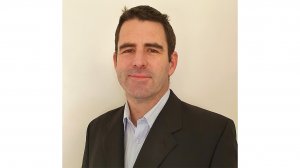
+27 11 441 1111
SRK House, 265 Oxford Road, Illovo, 2196, South Africa

Designs evolving to meet new outcomes


JUSTIN WALLS Engineers are increasingly looking to learn from natural analogues, so that they can better emulate these more sustainable designs and structures
Owing to the latest tailings dam standards demanding a longer-term view of design, construction and closure outcomes, a growing interest in design philosophies that incorporate shapes and processes as they exist in nature has been experienced, says SRK Consulting principal civil engineer in mine closure Justin Walls.
“Timelines for responsible post-closure management of mines, including the ongoing risks associated with tailings dams, have lengthened from decades to centuries, or even millennia,” he says.
“This shift renders traditional maintenance techniques very costly – perhaps unaffordable – and calls for a re-envisioning of how we design these structures in the first place.”
Speaking at the Environmental Engineering Division Conference of the South African Institution of Civil Engineering, held in October, Walls highlighted the value of geomorphic designs that emulate natural landforms as an example of this trend.
“Engineers and scientists are increasingly looking to learn from natural analogues, to understand how natural processes operate in a sustainable ecosystem so that we can better emulate these more sustainable designs and structures.”
He adds that, with the recent raising of the bar by the Global Industry Standard on Tailings Management (GISTM), it is likely that these nature-based approaches will gain greater traction.
The GISTM emphasises that designing and operating for closure requires a long-term view, and that tailings facilities should be planned, designed, constructed, operated and closed on the assumption that they will be permanent landforms.
It also stresses that short-term financial or operational priorities should not prevail over better design and operational practices that would have lower long-term impacts, complexity or risks.
Walls notes that the impact of climate change is among a range of ‘unknowns’ that make it difficult for mining companies to fully predict the way that tailings facility designs will perform over a timeline of 100, 500 or 1 000 years.
In the past, designers of these facilities have developed complex scientific responses to a range of factors including physical stability, water management, groundwater pollution, wind and water erosion, cover materials and the establishment of vegetation.
“Today, we face many more unknowns whose impact will unfold in unpredictable ways in coming years and decades – from climate change and neighbouring land use, to shifting regulatory requirements and evolving ecosystems.”
He notes that designing for a more geomorphic result could help introduce redundancies into the design to mitigate the impact of extreme rainfall events – which are becoming more common.
“Another field of investigation is how soil structure on tailings dams can provide better conditions for plant growth,” he said.
The GISTM has highlighted the need for closure planning in relation to tailings dams to begin much earlier in the life cycle of the facility.
Walls concludes that this kind of intervention is going to prove very valuable in reducing future liabilities.


